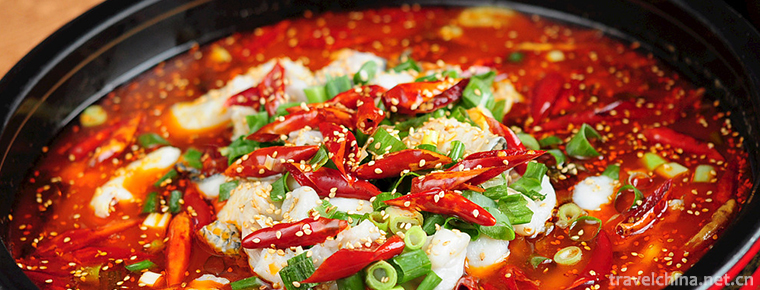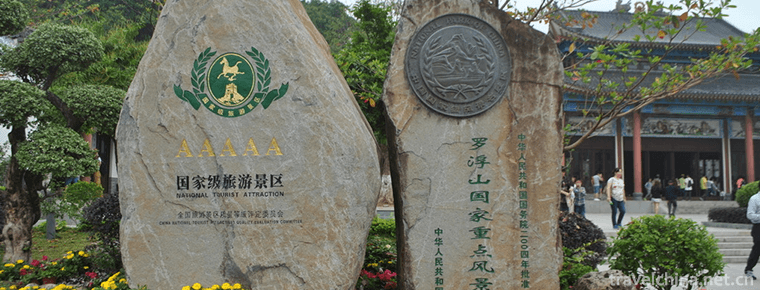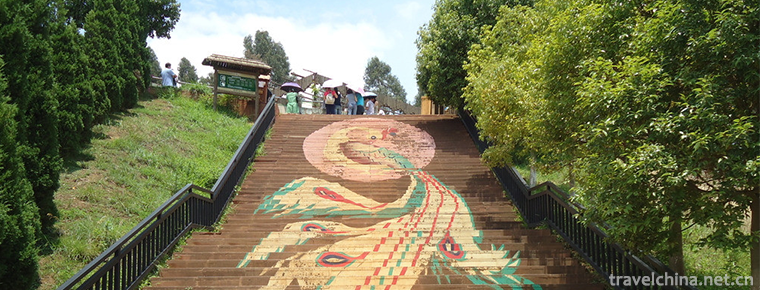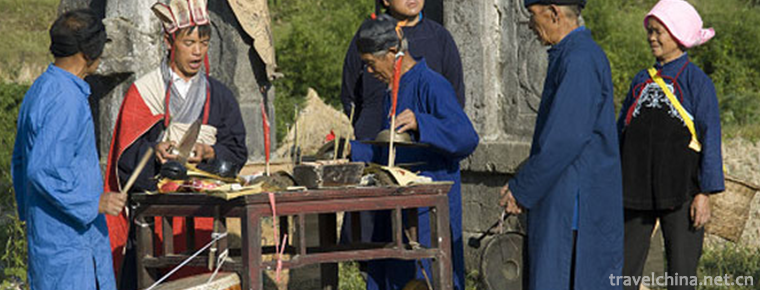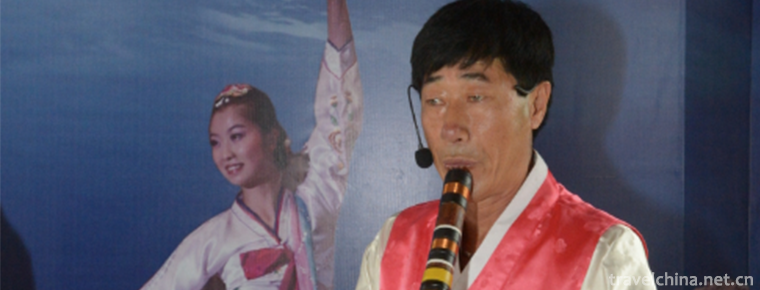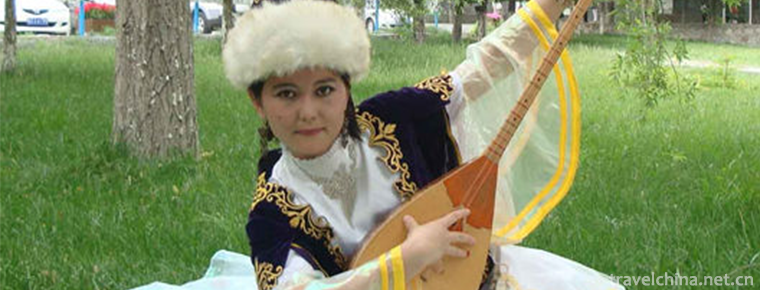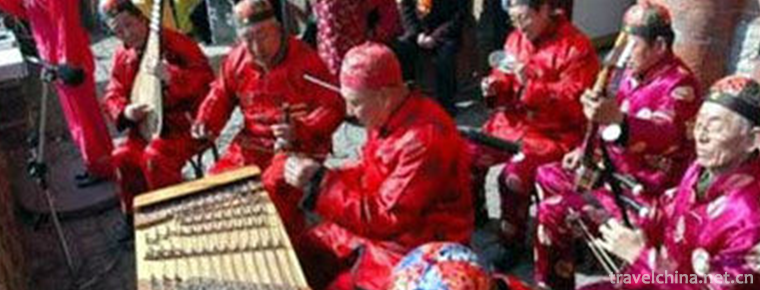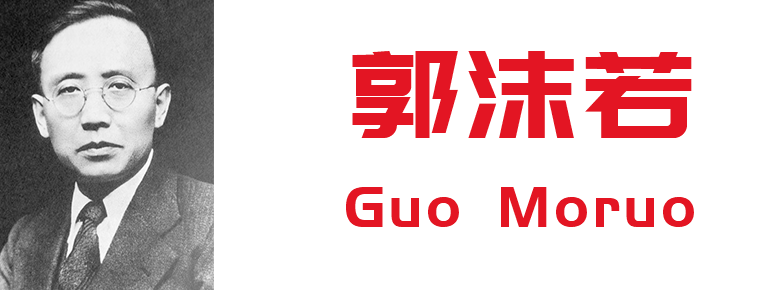Firing Techniques of Ru Porcelain
Firing Techniques of Ru Porcelain
Ru porcelain firing technology, the traditional handicraft of Ruzhou City, Henan Province, is one of the national intangible cultural heritage.
Ru porcelain firing technology originated in the middle of Tang Dynasty, reached its peak in the middle and late Northern Song Dynasty, and continued to the contemporary era.
On May 23, 2011, the firing technique of Ru Porcelain was approved by the State Council of the People's Republic of China and listed in the third batch of national intangible cultural heritage, the heritage number_-189.
historical origin
The firing technique of Ru Porcelain began in the mid-Tang Dynasty and flourished in the middle and late Northern Song Dynasty, and has continued ever since. The firing techniques of Ru Porcelain can be roughly divided into five periods: first, the firing period, that is, the early Northern Song Dynasty, from the first year of Jianlong (960) of Taizu in Song Dynasty to the first year of Qianxing (1022) of Zhenzong in Song Dynasty. During this period, its products were simple in shape and did not pay much attention to decoration, but the glaze was relatively bright and moist, with the basic characteristics of Ru celadon. Second, the development period, namely the first year of Tiansheng (1023) to the eighth year of Shenzong Yuanfeng (1085), the products of this period not only have various shapes, but also pay attention to decorative effect, with bright glaze, dense film opening and unique features. Thirdly, in the late Northern Song Dynasty, from the first year of Yuanyou (1086) to the seventh year of Huizong Xuanhe (1125), the products of this period were exquisite in craftsmanship, superb in skills and high in reputation, which were appreciated by the court of the Northern Song Dynasty. In the fourth period, the firing techniques spread among the people. During the confrontation between Song and Jin Dynasty, most of Ruguan kilns ceased firing, and the firing techniques of Ruguan porcelain spread to the people. The fifth period is the folk firing period of Ru Porcelain, that is, from Yuan, Ming, Qing to contemporary. Baofeng Ru Porcelain firing technology is inherited, continued and developed in the folk.
After the founding of New China, in order to carry forward this national cultural heritage, the local government formed a research team on the firing technology of Ru Porcelain, and organized many visits to the folk, excavated the firing technology of Ru Porcelain, established various types of Ru Porcelain factories, trained a large number of professional and technical personnel, and made the traditional firing technology of Ru Porcelain Shing brilliant again.
Technological characteristics
The traditional firing technique of Ru Porcelain has four characteristics, which artists call "Four Great Techniques of Making".
Ingredients must be absolutely: Ru Porcelain is very rigorous in the selection of raw materials, such as kaolin, agate, gold earth and black thousand earth, within a certain range of local areas.
Colour change: Ru Porcelain adopts unique superposition firing technique of supporting nail. Full glaze firing, observing the changes of glaze surface in the kiln by fire, controlling the temperature in the kiln with the changes of kiln, and then controlling the glaze color change of products, is a unique technique in the firing process of Ru Porcelain, and is also the core feature of the firing technology of Ru Porcelain Ruzhou. This skill relies entirely on the observation and understanding of kiln technicians, without specific and unified quantitative indicators.
Cracks: The glaze of ordinary porcelain is straight crack, while the glaze of Ru porcelain is oblique crack, like flies'wings and cicadas' wings. It is precisely through the precise control of temperature that crab claw pattern, pear skin pattern, fish grain and ice crack opening fine Ru porcelain can be obtained.
Ying Guangju: Ru porcelain products fired with traditional technology of Ru porcelain firing will show different color tones along with the intensity of light, different days and clouds, color will show obvious differences, and the accumulation of small bubbles under the glaze will show the spectacle of stars in the sky when viewed under a microscope.
Technological process
raw material
There are abundant ceramics and dense forests in Linru, Baofeng, Lushan and other places under the jurisdiction of Ruzhou, ranging from Yanhedian on the slope of Python River to Luohuan, Taogou, Qingliangsi in the southeast to Lushan Broken Store, which is a hundred miles away. A large number of calcite, potassium albite, feldspar sandstone, pyrophyllite, translucent stone, hard kaolin, soft kaolin, quartz and other main raw materials are widely distributed. The unique advantages of kaolin, quartz and coal resources are the natural environment for Ru Porcelain to survive.
Technological process
Stone quarrying stone picking stone picking stone washing crushing filtering smelting manual drawing blank (mold grouting forming blank) casting blank workpiece carving burning (600 C - 800 glazed (agate glazed glaze enaenaenamelmelmelmelt refining glazed blank refining Yin drying box box box box box box high temperature oxidation reduction firing (1000 mould grouting blank casting The results of this study are as follows:1. Celestial Ru Porcelain is fired in the atmosphere of heavy reduction and at high temperature. Pink Qing Ru Porcelain is fired in medium atmospheric atmosphere and at a slightly low temperature. Bean Mu Ru Porcelain is fired in the atmosphere of light reduction and at low temperature.
Inheritance and Protection
Inheritance value
historical value
In the history, the fine products burned by Ru kiln are imperial articles, which contain the cultural and artistic spirit of Tang and Song Dynasty and crystallize the scientific and technological level and ability of Tang and Song Dynasty. They rank among the five famous ceramics of Ru, Guan and Jun Geding, and occupy a prominent position in the history of Chinese ceramics.
humanistic spirit
Ru Porcelain flourished in the Song Dynasty. Influenced by the mainstream aesthetic culture at that time, craftsmen pursued the idea of "conforming to nature and being tired of people's will", pursuing the idea of "nature and freshness", "natural and simple" shape and glaze color of "elegant and graceful", which accorded with the aesthetic of "harmony between man and nature", "natural interest", and embodied the cultural spirit of dignified and concise form and spirit, and natural harmony.
aesthetic value
Ru Porcelain is simple and dignified in shape, precise and harmonious, elegant and implicit. Observed in the sunshine, the glaze is mostly ruddy, if the rain passes through the sky. The glaze bottom resembles the stars in the sky. It can be said that it is a perfect combination of pearls and stars. It has great artistic appeal. It makes people feel relaxed and delightful and has endless charm. In addition, there are few handed down works, and it is rare for ordinary people to have their views. Art master Li Kuchan once wrote that "there is no Ru in the Museum of the World, and it is difficult to call it perfect", which is the high aesthetic value of his art.
The Value of Science and Technology
The reason why Ru Porcelain is precious is that besides the short firing time and few handed down products in history, the firing technology of Ru Guan Porcelain is more difficult. In the firing process, not only the local climate, temperature, humidity, wind power, water quality and fuel have a great relationship, but also how to grasp the viscosity and fluidity of glaze firing melting temperature and the scientific principle of iron reduction and the crystallization process of slow heat preservation and cooling, all directly affect the formation of Ru celadon milk beads and the color of celadon glaze. This firing technology has made Ru ceramics famous for thousands of years. It has high scientific research value.
Heritage figures
Zhu Wenli, male, born in September 1950, is the representative successor of the fourth batch of state-level intangible cultural heritage projects. He declared the project in Ruzhou City, Henan Province: the firing skills of Ru Porcelain.
Meng Yusong, female, born in January 1942, is the representative successor of the fourth batch of national intangible cultural heritage projects. Ruzhou City, Henan Province, declares the project: Ru porcelain firing skills.
protective measures
On May 23, 2011, the firing technique of Ru Porcelain was approved by the State Council of the People's Republic of China and listed in the third batch of national intangible cultural heritage list.
In 2017, Baofeng Ruyao Museum opened.
On May 24, 2018, "Ru Porcelain Firing Techniques" in Baofeng County was listed in the First Catalogue of Revitalization of National Traditional Crafts.
social influence
Honorary recognition
In 1984, the test project of Ru porcelain celestial blue glaze, a firing technology product of Ru porcelain, won the Henan Science and Technology Progress Award.
In 1986, nine kinds of Ru porcelain products, such as Shuanglong bottle, inner flower bowl, chicken heart bowl and Yuhuchun, produced by Linru County Arts and Crafts Ru Porcelain Factory, won the "Golden Cup Award" at the third Chinese Arts and Crafts "Hundred Flowers Award" evaluation meeting.
In 1986, Ru Porcelain No. 17 Bean Green Glaze was awarded Henan Science and Technology Progress Award.

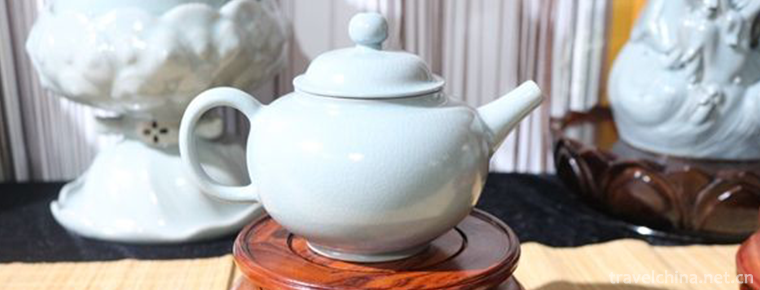
-
Sliced Fish in Hot Chili Oil
Boiled fish, also known as river boiled boiled fish and boiled fish fillet, was first popular in Cui Yun Township, Yubei District, Chongqing..
Views: 247 Time 2018-10-27 -
Luofu Mountain Scenic Area
Luofu Mountain Scenic Area is a national AAAAA level scenic area. It is located on the Dongjiang River of Guangdong Province, 35 kilometers away from Boluo County, Huizhou City.
Views: 307 Time 2018-12-12 -
Yunnan Wildlife Park
Yunnan Wildlife Park is located in Qingshuihe Village, Fengyuan Road, Panlong District, Kunming City (beside Yunnan Forestry Department), 10 kilometers from the urban center of Kunming City.
Views: 194 Time 2018-12-22 -
Jiankou Great Wall
The Great Wall is located in Badaohe Township, northwest of Huairou District, Beijing suburb. It is 1141 meters above sea level and about 30 kilometers away from Huairou County..
Views: 237 Time 2019-01-21 -
Production Techniques of Buyi Medical Herbs for Benefiting Liver
Guiding County, Guizhou Province, is a subtropical monsoon rheumatic fever climate with distinct seasons, rich heat, long frost-free period, abundant rainfall and complex and.
Views: 318 Time 2019-04-04 -
Korean Dongxiao Music
The Koguryo History Music Records records that Dongxiao belonged to the musical instruments of the Tang Dynasty in China. During the period of Shizong in the Li Dynasty.
Views: 126 Time 2019-04-16 -
Kazakhstan 62 Kwohner
Kazakhstan 62 Kwohner 62 Kwohner is Kazakh folk classical music, which means "62 suites". It is a comprehensive art mainly composed of instrumental music, accompanied by folk songs, dances,.
Views: 207 Time 2019-05-02 -
Firing Techniques of Ru Porcelain
On May 23, 2011, the firing technique of Ru Porcelain was approved by the State Council of the People's Republic of China and listed in the third batch of national intangible cultural heritage, the he.
Views: 91 Time 2019-06-11 -
Yulin Xiaoqu
The lyrics of Yulin Xiaoqu are integrated with elegance and vulgarity. In terms of language style and structure, there are not only words used by ordinary scholars, but also local dialects and dialect.
Views: 165 Time 2019-07-14 -
Guo Moruo
Guo Moruo (1892 1978), formerly known as Guo Kaizhen, the word Ding Tang, the warrior, the baby name leopard, the pseudonym of Mo, Michael, Guo Dingtang, Shi Tuo, Gao Ruhong, Yang Yi and so on. Born i.
Views: 181 Time 2019-09-07 -
Anhui Agricultural University
Anhui Agriculture University is located in Hefei, capital of Anhui province. Center Urban area Key universities in Anhui By Ministry of agriculture and rural People's Republic of China State Forestry .
Views: 189 Time 2019-10-10 -
Introduction to Chinese embroidery
Embroidery, known as needle embroidery in ancient times, is a kind of technology that uses embroidery needle to guide color thread, embroiders the designed patterns on textiles, and forms patterns with embroidery traces. In ancient times, it was called "Juju" and "pinju"..
Views: 101 Time 2020-12-12
